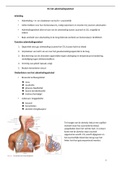WORLD ARCHAEOLOGY 2.2 TENTAMEN
6000 BC Neolithic: small village communities, growing of barley, breeding of pigs and sheep
3000 BC Bronze age from the Near East
CIVILIZATIONS GREECE
Minoan 2000- - grain and sheep
civilization 1500 - olive trees and viticulture (from 2000 BC)
Crete BC / - export of wool, olive-oil products and ceramics
3500- - Linear A on Minoan Crete 1500 BC mainland Greece invaded and Linear B took
1100 BC over
First palace period 2000-1700 BC: administrative functions and elites, multifunctional.
Second palace period 1700-1490 BC: palace complexes remodelled, large towns and
villa complexes.
Phaisto Phaistos disk
s
Knossos Only one remaining, goddesses and a special position
for the bull. (bull-leaping scene Fresco, 1450 BC)
- snake goddesses 1600 BC
- palace economy: Pithoi (storage vases)
Avaris (Tell el-Dab’a) Contact zone inner Egypt and
18th dynasty Mediterranean
1550-1300 BC - fleet of the Pharaoh (ship)
- Levant (Byblos ships)
- Aegean (Keftiu ships)
- palaces in Egypt with Aegean/Minoan iconography
Mycenaean 1750- - Linear B seals, palatial complexes, several regional kingdoms, socio-political
civilization 1050 BC stratification
Mainland - Helladic: bronze age culture on Greek mainland
- Indo-European immigrants from 2000 BC
- fortified palaces with thick defensive walls
Mycenae ‘Lion-Gate’
- grave circle A 1600-1500 BC (golden mask of Agamemnon
1550-1500 BC)
Pylos (unfortified) ‘Palace of Nestor’ mycenaean tomb c.1500: rich
graves for elites with arms and armor as grave goods
c.1200 BC: Linear B tablets
Troy Turkey, c.1200 destroyed by attackers from Mycenaean world
From Crete new innovation horse-drawn chariots
- places destructed by fire -> Linear B tablets preserved
- mycenaean pottery travelling everywhere in Mediterranean, near east and Egypt;
closed vessels with luxury products (imitations by the middle class)
FALL
- internal: limited agricultural base; top-heavy with its administration, army; ethnic
and cultural tensions
, - external: vulnerable in its network of outward relations; fall of the late bronze age
kingdoms in near east and Egypt (sea peoples)
1000 BC Dorian invasions less elaborate political and economic relationships
AXIAL AGE
Foundations Greek Orientalising period: strong influences from o.a. near east
civilization 1000-500 BC
Dark age 1000-750 BC (geometric period) Aegean demographic decline, demise elite authority,
interregional connectivity revived quickly, internal social hierarchy returned
Archaic period 700-480 Population increase, more burials/graves for entire community = emerge of
BC democratic ‘citizen ideal’ and emerge of polis (Greek city-state, with political
body of elites). Innovations with bronze and iron working (oriental figures). Free
standing statues and new alphabetic script
Magna Graecia: Greek colonies in south Italy and sicily with temples
Hoplite: heavily armed infantrymen with shield fighting in a phalanx
-> around 500 BC they are gone and the people claim bigger role.
Athens reforms of Cleisthenes (508/507 BC)
Darius I conquest Cyrus, Cambyses, Egypt, Near East, Iran -> unity through
standardization
Persian invasions:
490 BC: Darius I tries to conquer Greece and defeated at Marathon
480 BC: Xerxes tries again, wins at Thermopylae; takes Athens destroyes
Acropolis; defeated at Salamis in sea battle by Athenian war fleet and trireme
Classical period 480-338 City-states; cooperation and competition, interpolis warfare is endemic, complex
BC and shifting political and military alliances
Factor Greek expansion: overpopulation/need for territory, internal tensions, exploiting natural
resources
OTHERS
Phoenicians origin coastal Lebanon, 1st millennium bc. Developments parallel to greeks; city-
states, expansion/colonies, Phoenician influence on Greek script and monuments.
- Expansions: maritime travel and trade vital, colonies exchange-oriented, in metal-
rich regions coastal zones, most famous Phoenician colony: carthage, Tunisia
Etruscans (in italie) 700-400 BC, several city-states on fortified hilltops formed the Etruscan
league. Encroachment/influence on early rome, tensions with Greek colonists, class
hierarchy (rich elite tombs) defeated by romans in 4-3 cent. BC
Carthaginian Phoenician origins, agriculturally rich, much trade, maritime focused. Punic wars:
empire between rome and carthage, 216 BC Hannibal defeats rome, 146 BC carthage
defeated/destroyed; territory becomes roman African.
Greek polis terms + acropolis building
chora Hinterland, agricultural activities on which the city depended.
astu Urban center, inside the city walls. Consists out of residential quarters, an
acropolis (high city) and an agora. Surrounded by necropolis = cemetery
politeia ‘constitution’ or ‘body of citizens’, the idea that all citizens have a voice in the
government of the city
Acropolis of High limestone ‘table’. Mainly ritual fuction, dozens of deities were honoured;
6000 BC Neolithic: small village communities, growing of barley, breeding of pigs and sheep
3000 BC Bronze age from the Near East
CIVILIZATIONS GREECE
Minoan 2000- - grain and sheep
civilization 1500 - olive trees and viticulture (from 2000 BC)
Crete BC / - export of wool, olive-oil products and ceramics
3500- - Linear A on Minoan Crete 1500 BC mainland Greece invaded and Linear B took
1100 BC over
First palace period 2000-1700 BC: administrative functions and elites, multifunctional.
Second palace period 1700-1490 BC: palace complexes remodelled, large towns and
villa complexes.
Phaisto Phaistos disk
s
Knossos Only one remaining, goddesses and a special position
for the bull. (bull-leaping scene Fresco, 1450 BC)
- snake goddesses 1600 BC
- palace economy: Pithoi (storage vases)
Avaris (Tell el-Dab’a) Contact zone inner Egypt and
18th dynasty Mediterranean
1550-1300 BC - fleet of the Pharaoh (ship)
- Levant (Byblos ships)
- Aegean (Keftiu ships)
- palaces in Egypt with Aegean/Minoan iconography
Mycenaean 1750- - Linear B seals, palatial complexes, several regional kingdoms, socio-political
civilization 1050 BC stratification
Mainland - Helladic: bronze age culture on Greek mainland
- Indo-European immigrants from 2000 BC
- fortified palaces with thick defensive walls
Mycenae ‘Lion-Gate’
- grave circle A 1600-1500 BC (golden mask of Agamemnon
1550-1500 BC)
Pylos (unfortified) ‘Palace of Nestor’ mycenaean tomb c.1500: rich
graves for elites with arms and armor as grave goods
c.1200 BC: Linear B tablets
Troy Turkey, c.1200 destroyed by attackers from Mycenaean world
From Crete new innovation horse-drawn chariots
- places destructed by fire -> Linear B tablets preserved
- mycenaean pottery travelling everywhere in Mediterranean, near east and Egypt;
closed vessels with luxury products (imitations by the middle class)
FALL
- internal: limited agricultural base; top-heavy with its administration, army; ethnic
and cultural tensions
, - external: vulnerable in its network of outward relations; fall of the late bronze age
kingdoms in near east and Egypt (sea peoples)
1000 BC Dorian invasions less elaborate political and economic relationships
AXIAL AGE
Foundations Greek Orientalising period: strong influences from o.a. near east
civilization 1000-500 BC
Dark age 1000-750 BC (geometric period) Aegean demographic decline, demise elite authority,
interregional connectivity revived quickly, internal social hierarchy returned
Archaic period 700-480 Population increase, more burials/graves for entire community = emerge of
BC democratic ‘citizen ideal’ and emerge of polis (Greek city-state, with political
body of elites). Innovations with bronze and iron working (oriental figures). Free
standing statues and new alphabetic script
Magna Graecia: Greek colonies in south Italy and sicily with temples
Hoplite: heavily armed infantrymen with shield fighting in a phalanx
-> around 500 BC they are gone and the people claim bigger role.
Athens reforms of Cleisthenes (508/507 BC)
Darius I conquest Cyrus, Cambyses, Egypt, Near East, Iran -> unity through
standardization
Persian invasions:
490 BC: Darius I tries to conquer Greece and defeated at Marathon
480 BC: Xerxes tries again, wins at Thermopylae; takes Athens destroyes
Acropolis; defeated at Salamis in sea battle by Athenian war fleet and trireme
Classical period 480-338 City-states; cooperation and competition, interpolis warfare is endemic, complex
BC and shifting political and military alliances
Factor Greek expansion: overpopulation/need for territory, internal tensions, exploiting natural
resources
OTHERS
Phoenicians origin coastal Lebanon, 1st millennium bc. Developments parallel to greeks; city-
states, expansion/colonies, Phoenician influence on Greek script and monuments.
- Expansions: maritime travel and trade vital, colonies exchange-oriented, in metal-
rich regions coastal zones, most famous Phoenician colony: carthage, Tunisia
Etruscans (in italie) 700-400 BC, several city-states on fortified hilltops formed the Etruscan
league. Encroachment/influence on early rome, tensions with Greek colonists, class
hierarchy (rich elite tombs) defeated by romans in 4-3 cent. BC
Carthaginian Phoenician origins, agriculturally rich, much trade, maritime focused. Punic wars:
empire between rome and carthage, 216 BC Hannibal defeats rome, 146 BC carthage
defeated/destroyed; territory becomes roman African.
Greek polis terms + acropolis building
chora Hinterland, agricultural activities on which the city depended.
astu Urban center, inside the city walls. Consists out of residential quarters, an
acropolis (high city) and an agora. Surrounded by necropolis = cemetery
politeia ‘constitution’ or ‘body of citizens’, the idea that all citizens have a voice in the
government of the city
Acropolis of High limestone ‘table’. Mainly ritual fuction, dozens of deities were honoured;









